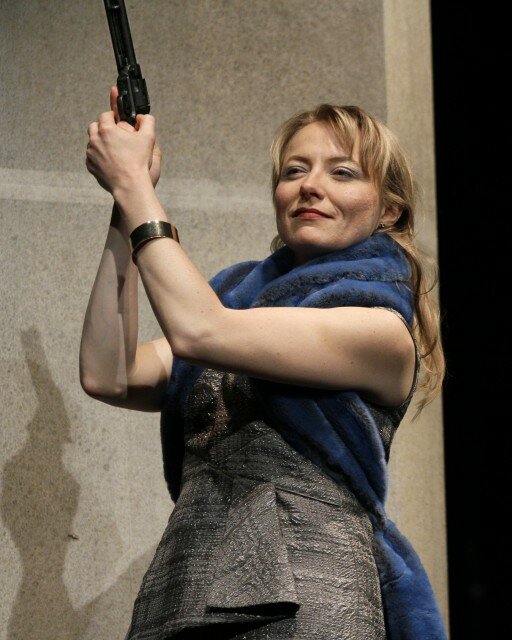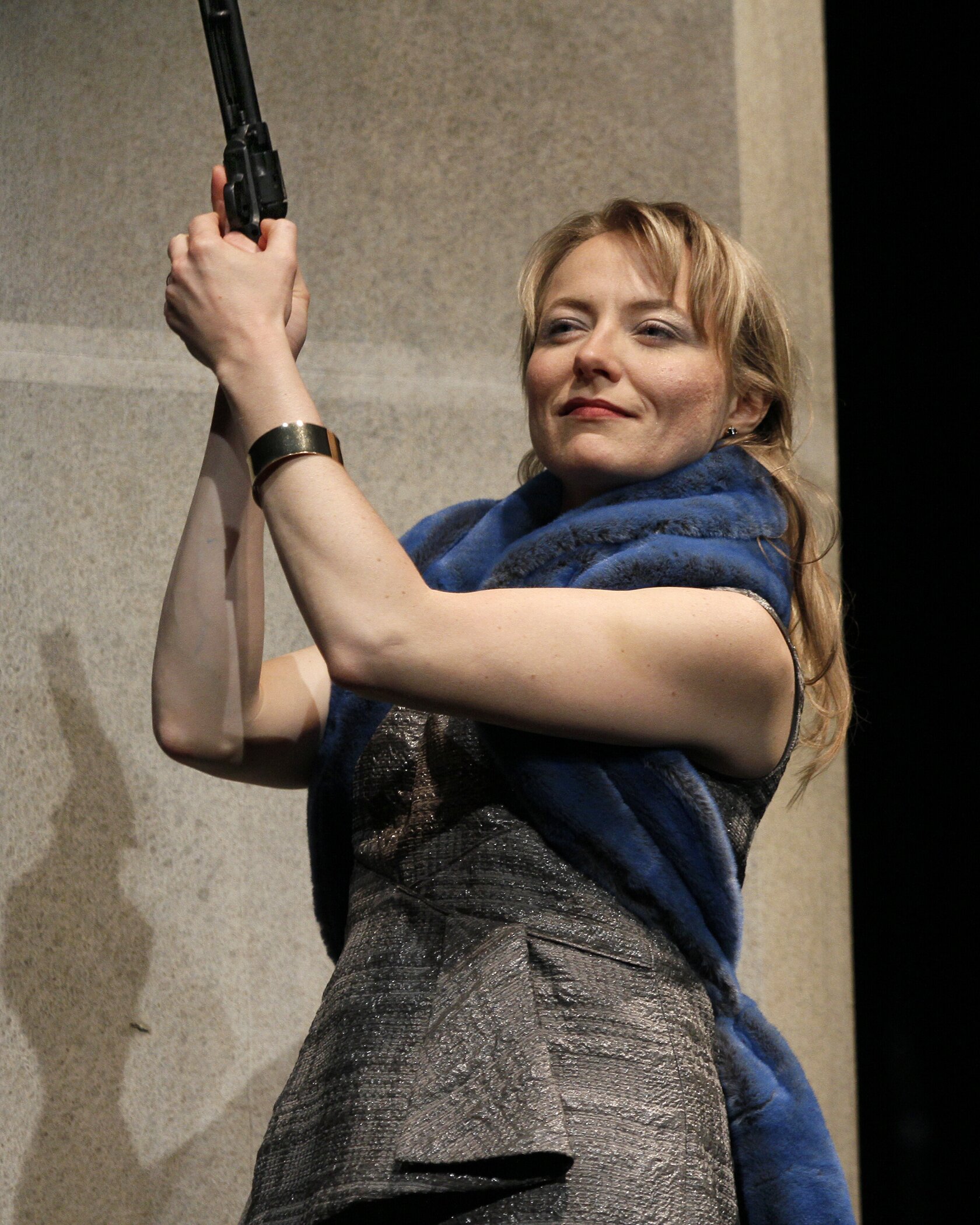There are some unique pleasures to Intiman’s repertory summer that are as good an excuse as any to catch every show in the season. Among these is the opportunity to see the same actors playing vastly different roles. Similarly the set gets put to widely varying uses. Whether casting an actor or rearranging the set not every arrangement is a perfect fit. With this production of Henrik Ibsen’s 19th-century classic, Hedda Gabler (in repertory through August 25, tickets: $30 ), the imperfections make much of the interest.

The play concerns the attractive and vivacious Hedda (Marya Sea Kaminski), daughter of a prominent military figure and accustomed to a society life. After years at the center of the social world in her small Norwegian town she shocks everyone by marrying the bookish and mild-mannered Jorgen Tesman (Ryan Fields).
The play begins the morning after their return from a honeymoon trip of several months—much of which Tesman spent doing doctoral research. As they embark on their new life Hedda struggles with the specter of boredom and the other consequences of her marriage in the face of encountering old flames.
The old flames include the urbane and sophisticated Judge Brack (the excellent Timothy McCuen Piggee) and the reformed volatile intellectual Eilert Lovborg (Michael Place). Amid these conflicting relationships and under the threatening vision of Tesman’s beloved Aunt Julie (a strong Shellie Sulkin), Hedda spins a series of deleterious and selfish manipulations that end in final tragedy.
As is often the case Ibsen is concerned with the state of women in his society and this production focuses on the notion of Hedda as a prisoner. The strength of the play is that Hedda is imprisoned by her choices first and foremost while the circumstances of her time simply raise the stakes.
The wear and tear of the passing years is also mitigated by the translation. Director Andrew Russell has assembled a script, evidently based on various public domain translations, that removes the overt statements that can make Ibsen feel dated. This text is heated by barely veiled innuendo and tantalizing ambiguity that most of the cast plays smartly with choices that feel in the moment and nearly improvised. In these conditions the simple decision to pour a brandy can elicit a laugh from the audience.
Michael Place, foppishly intellectual in glasses, long hair and draped shirt, finds the perfect balance between the intellectual and sensual in a role that can easily veer into the cerebral. We have no trouble understanding either Hedda’s attraction to his Lovborg or her interest in his destruction.
Ryan Fields provides a sympathetic Tesman, aware that, in Hedda, he has won ill-gotten gains that he can have but not enjoy. What is a tragedy for Hedda is more of a sad relief for him and one can easily imagine a fascinating play built from his post-Hedda epilogue.
While each actor will carry something of their other roles in each of their appearances this is all the more true of the set. As created by Jennifer Zeyl, the Tesman home feels as if it has been dropped into the space, like toy furnishings in a dollhouse of a different scale. A platform topped by dark hardwood flooring launches out of the proscenium apron marking the single room of Ibsen’s script. At rise this space is cut off from the rest of the stage by scrims that create Hedda’s parlor prison while giving the audience a view beyond those walls. Hedda still seems bound within those walls even when she leaves the parlor.
Erik Andor’s costumes serve the characters rather than any specific period and they’re all gorgeous. However Hedda’s third and final dress almost falls out of the ensemble with its unsettling, short, and soft drape resembling something from an ’80s cocktail party.
Matt Staritt’s sound design is perfection. Notes played on the piano are picked up, repeated and sustained after the piano player leaves the keyboard, shifting from the piano to fill the audience. The subtlest introduction of tones enhances the moments in which Hedda’s manipulations take form.
Russell’s boldest choice in the direction is in setting off those moments in which Hedda’s manipulations and mania begin to coalesce in physical gestures that are nearly natural, but distinctly psychological and abstract. With the support of those sound cues and small shifts in lighting these spasms of twisting limbs grow more frequent and presentational as Hedda’s subconscious comes further to the fore. Finally it leads her in a kind of possessed compulsion to her most destructive acts.
While these choices are initially distracting to many audiences their slow build and Kaminski’s committed performance ease us into acceptance of their histrionic conclusions. Without this visible stitching the cloth of the production would feel too fragile under the strain of its emotional tumult.

Very proud of our Cornish connections to the summer festival.
The repertory company includes actors Timothy McCuen Piggee (TH Faculty); Carol Roscoe (TH Faculty); Marya Sea Kaminski (TH Faculty); Fawn Ledesma (TH ’11) and performance interns Jonathan Crimeni (TH ’13); Drew Highlands (TH ’13); Jonathan Pyburn (TH ’13); Angela Rose Sink (TH ’13).
The creative team includes Cornish staff Michelle Grimm and alums Megan Tuschoff (PP ’13); Holly McNeill (PP ’13); Kayla Walker (TH ’12); Sara Peterson (TH ’12); and Quinn Armstrong (TH ’12).
Stefan
Interesting. I found the innuendos way too heavy handed and the movement elements distracting. Here are my thoughts http://seattletheaterscene.blogspot.com/2012/07/hedda-gabler-at-intiman-theater-theater_20.html
SD